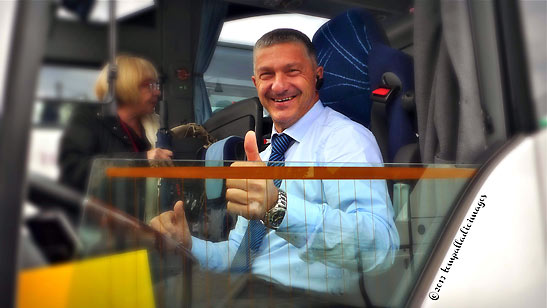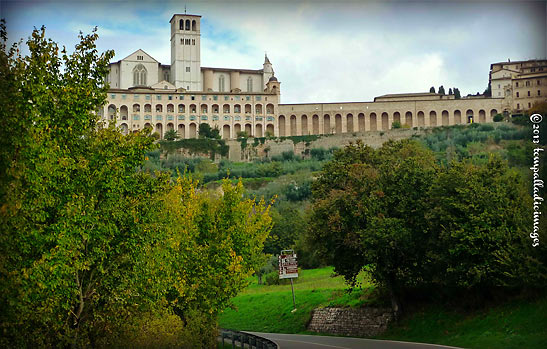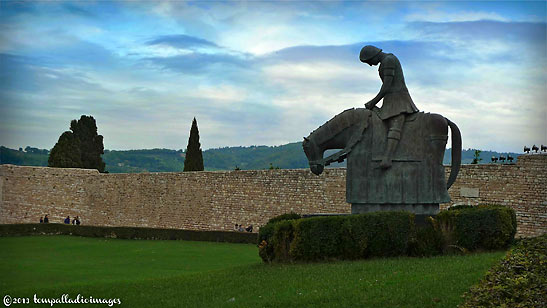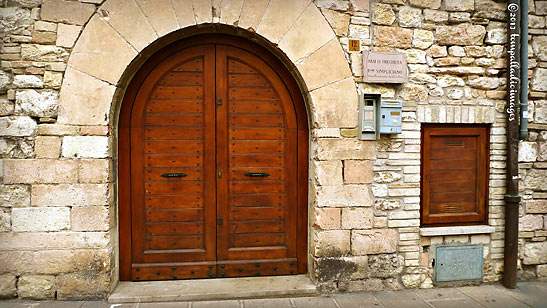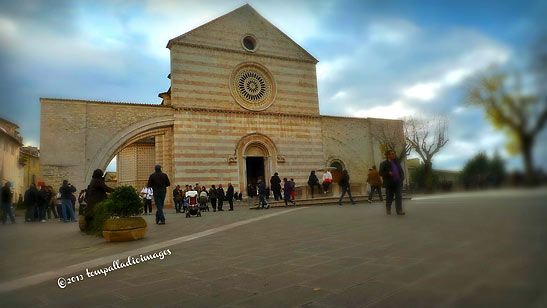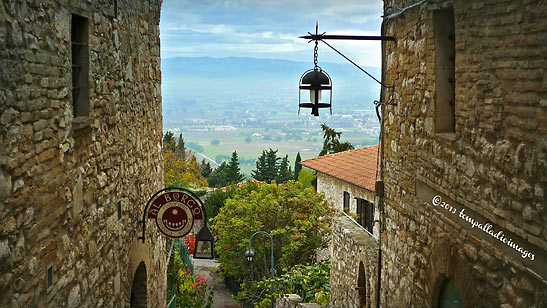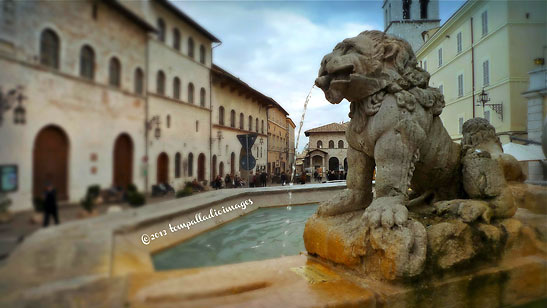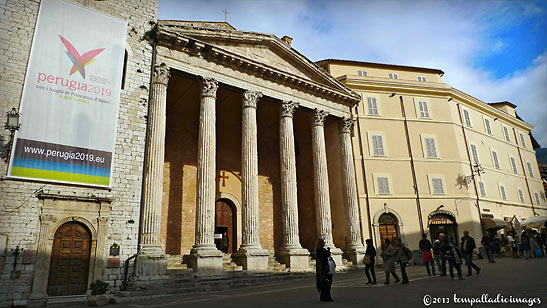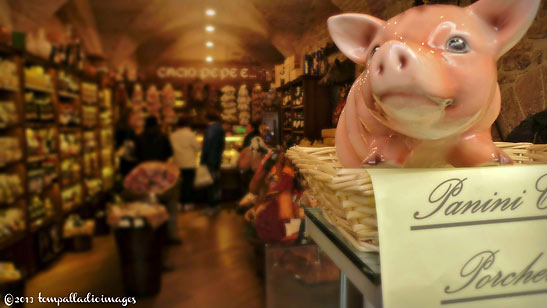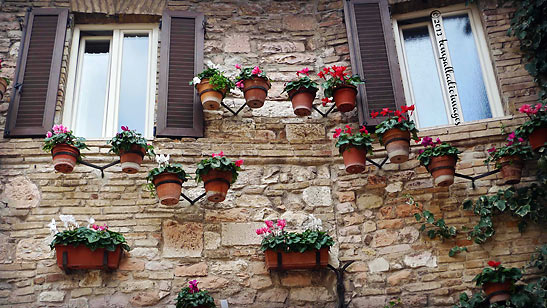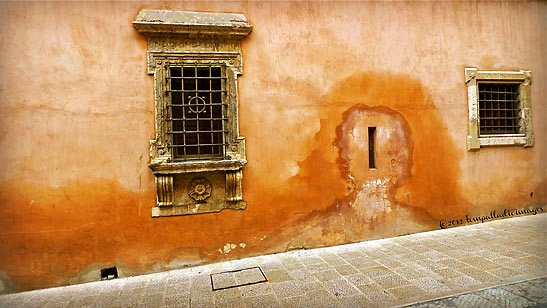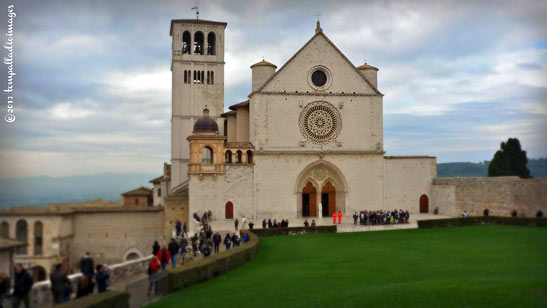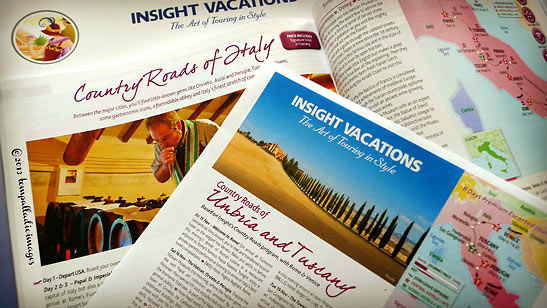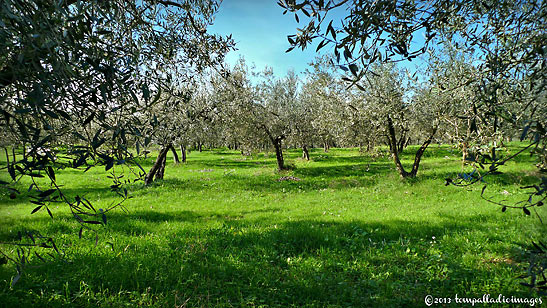 |
 |
|
 |

|
Country Roads:
Saintly Assisi Story and photos by Tom Weber
Belinda, our tour director-slash storyteller, greets us at the landing above the stairs with a smile and a hearty BUONGIORNO! Buckled in and all accounted for, Carlo, the skipper of our ship, gets the nod and puts the sleek cruiser in gear and we pull away from Perugia's Sangallo Palace Hotel.
Destination? Assisi. All together now: ahs-SEE-zee. Very good! It is here, in the Umbria of central Italy, the epicenter of medieval Italy, one of just five regions that are totally landlocked – cut off from the seas that straddle the Bel Paese's coastlines – where there are more saints-per-kilometer than any other spot on the planet. And, the one city that symbolizes this saintly stature is Assisi. Noted Umbri sons and daughters who hailed from Assisi and were canonized include Saints Agnes, Gabriel, Rufinus, Sylvester, Vitalis and Giovanni di Pietro di Bernadone, better known as Francis.
A former soldier and the son of a rich textile merchant, it was St. Francis who renounced all his worldly possessions and his "noble" family name and began his new, simple life in the service of the Lord by forming an order of friars, which took his name, the Franciscans. Look, when you think of Assisi you can't help but think of St. Francis, one of the Catholic Church's most revered saints.
Houses of worship and their associated art abound, but there's more than just religion that's left an imprint along the undulating streets of Assisi. Well before Christianity arrived, Umbrian tribes settled here around 1000 B.C., followed by the Etruscans, the Romans, the Ostrogoths – who laid waste to the city – the Lombards – who rebuilt it – Napoleon and his French armies – who pillaged some more – and, finally, the Vatican, which annexed Assisi under the Papal States flag.
Off the motorcoach and up an escalator, we're now on the cobblestone with our ear bobs in place attached to radio receivers following behind Marco, Insight's Umbrian art historian, who chronicles the history of Assisi as we make our way from one end of this UNESCO World Heritage site to the other.
It's a leisurely stroll that takes us inside landmark churches and past Roman and Etruscan ruins, bustling Piazza del Comune and the Temple of Minerva, artisan food shops, art galleries and open-air cafes, and ends at a lush greenbelt that leads down to the impressive Basilica of St. Francis. Ninety minutes later we're back on board the Insight motorcoach, reviewing our photos and notes of the town where saints did come marching in, and wait anxiously for new GPS coordinates from Belinda. What do you say we head for Spello and make fresh olive oil followed by a late lunch that'll turn into dinner?, she asks. The collective reply from the peanut gallery? SI!
For complete information on Insight Vacations' 12 Italian premium and luxury escorted itineraries and over 100 journeys throughout Europe just click HERE, or call toll free (888) 680-1241, or contact your travel agent.
Now, I've got to hook up to the onboard WIFI and get this dispatch emailed to my editor or I may not be riding on this motorcoach for much longer. See you soon in the olive groves! Related Articles:
|
|
Feedback for Destination Bosnia: Inside Sarajevo's Tunnel of Hope Spent time in Sarajevo in the fall of 1973…beer was excellent! --- David * * * * Hi Tom, I must say, you're photographs are always amazing. They are top notch. You bring so much class to Traveling Boy. It's photographs like yours that make me want to go out and do my own traveling. Please don't get tired of sending us your amazing adventures. It's such a delight for the soul. --- Raoul, Whittier, CA * * * * Hi Tom: --- David * * * * Hey Tom – Wow! Love those photos – they are so super that they make me A) Want to start eating NOW. B) Go there myself. C) See all that pristine beauty that looks so restful and peaceful. Great story, superb pix!!! Bravo!! --- John, Los Angeles, CA * * * * Feedback for Destination Southwestern France: Saint-Émilion Good job, Tom, and timely info. St. Émilion is in the list of places Jim Hayes and I will visit in September 2014. If we get the chance, we will exploit your experience to enhance the trip! --- Bobby Harper, Dameron, MD * * * * Feedback for Vicenza Walks – Monte Berico I lived in Vicenza for 4 years in the U.S. ARMY from 1963 to 1967. A wonderful place to explore. Palladio’s works are amazing. Have been back twice since and find new places to visit. My favorite is MONTE BERICO where I have some wonderful photos of my family. --- Dr. Albert Pizzi, Hanover, MA * * * * I liked the new TB particularly the Vicenza article that took me back as a youth when we lived in Naples and travelled up there for a baseball tourney (U.S. Military Bases dependent schools played each other.) Took me back to the plaza. --- Bill Feedback for A Canterbury Trail (Sutri) Very interesting note. I have wedroned which route the early pre-Christian and Christian pilgrims travelled to Rome from England. Is it still possible to travel the Francigena trail? --- Pawel You can find out more info on walking tours of Via Francigena at this site: http://www.compagniadeicammini.it/en/. Thanks for stopping by and commenting.. Tom * * * * Good article, enjoyed reading it. Saved your recommended sights for future use. --- Dardenne Prairie, MO * * * * You're going to be great at this Tom. Congrats. --- Donna Vissa -Montreal
|
This site is designed and maintained by WYNK Marketing. Send all technical issues to: support@wynkmarketing.com

|






